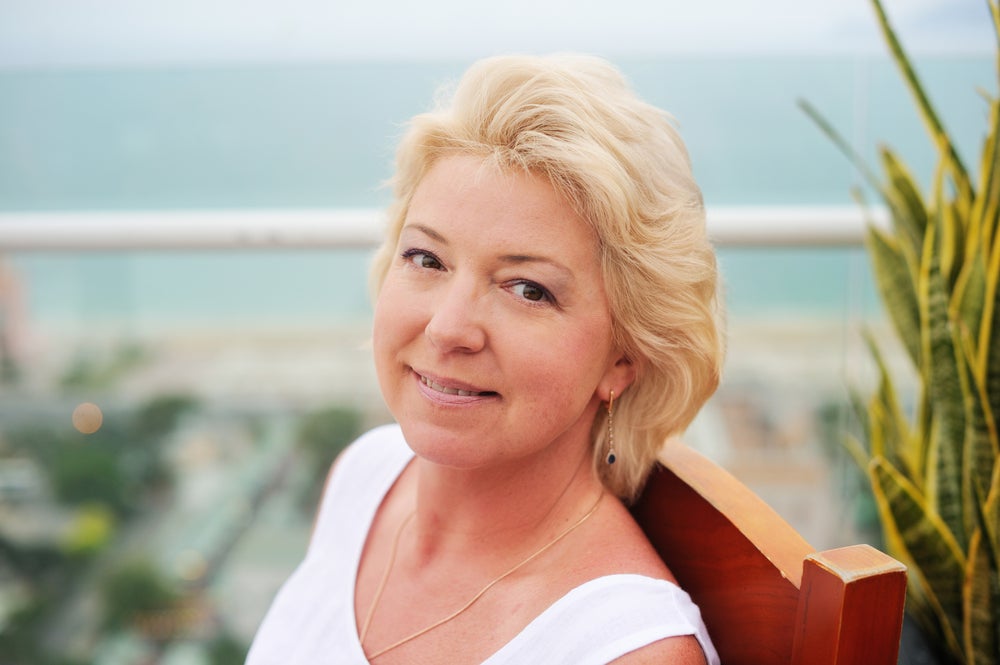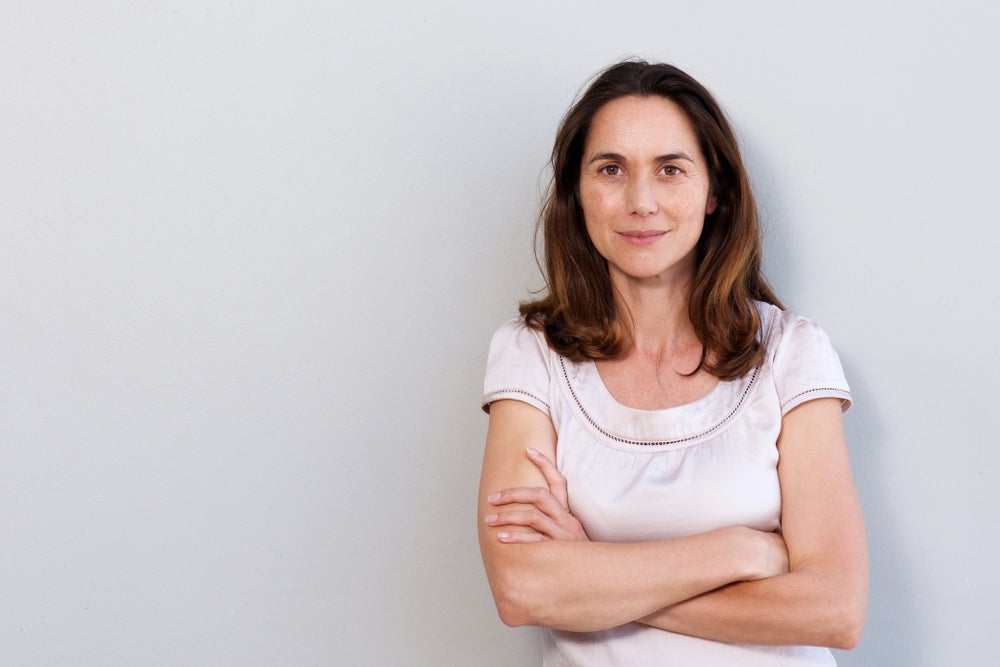Lydia’s Laparoscopic Hysterectomy
Laparoscopic Hysterectomy
Age at Surgery 54
Location: Midlands of South Carolina
I’d been on birth control pills since age 27. I’d had a fibroid since at least 1998 but it was not creating any problems and stayed the same for years at 5cm. At my annual checkup in November 2015 (age 53), my doctor took me off the BC pill, and I decided not to take any other hormone at the time to see what would happen. Wow: my cycle was anywhere from 13-54 days apart, varying duration, generally heavy bright bleeding with no clots. During an ultrasound in April, my doctor found the fibroid had doubled to 10cm and two more had appeared. After the exam, he simply asked in his easy-going style “So, when do you want to schedule your hysterectomy?” I laughed because it came out of nowhere. I asked if the fibroids could be removed, but he didn’t recommend it given what he suspected with his experience. I agreed to a laparoscopic supracervical hysterectomy. The plan was to keep my ovaries, tubes and cervix since I’d not had an abnormal pap in 20+ years and no family history of ovarian or cervical cancer.
My hospital experience was great, staff was wonderful. My husband stayed with me pre-op, and one of our pastors came to visit, too. Plenty of laughter and prayer helped me relax. Going under anesthesia was way deeper than any sleep, no dreams, no sensations, and when I came around briefly in the recovery room, it felt like I’d only been out 5-10 minutes instead of hours. When I woke up in my room, my husband was beside me. I don’t remember lunch (even though I posted about it on social media!), or my husband fixing me a cup of coffee, but I do remember the vegetable lasagna for supper. Hubs and daughter left before 7pm that evening, and I was asleep by 7:30.
I stayed overnight for observation…and good thing! I had an anesthesia-induced “Where and when am I?” episode when I woke up around 12:30am and tried to get out of bed. Bed alarm sounded, and I was tethered to the IV, leg cuffs and catheter! Two nurses got the catheter and leg pumps off. One walked the hall with me while the other got my bed straightened. While walking, I asked “What time is it?” “12:45.” “In the day?” though I could see how dark it was through the windows! Amused but patient, she answered “No, it’s night time.” I was thinking more clearly by morning when my doctor came to see me and share more details of my surgery.
My recovery was textbook. I had the usual constipation, swelly belly, pain and twinges, and fatigue. No bleeding. First week I depended on Percocet and prescription Motrin, second week I could get by with Motrin and was able to walk around the block. I spent most of my time in the easy chair, going through 2-1/2 years’ worth of Fitness, Shape and Cooking Light magazines, and binge-watching M*A*S*H. Swelly belly was the side effect which stumped me. It had not been covered in the class I attended nor in any of the post-op materials I had. I kept seeing “www.hystersisters.com” as a source for that and other questions and finally visited. I joined right away to download the “What 350,000 Women Know…” booklet . It became my recovery manual. My doctor cleared to resume all activities at Week 4, ramping up gradually. Swelly belly was less noticeable by week 8 (as my doctor had predicted), though I’d get it every time I resumed an activity. The last thing to go away was the numb/bruised spot between two of my incisions, probably a severed nerve. It took a little past 4 months for it to heal entirely.
As a runner and free-weight lifter prior to surgery, the biggest adjustment I had was not being my energetic self afterwards. I returned to my part-time desk job after 2 weeks at reduced hours during the short Memorial Day week. The first week brought fatigue, swelling, achy back from sitting upright, and stress. If I had to hit the rewind button, I’d stay home for 3 weeks and still would’ve returned to reduced hours.
My hysterectomy was a positive experience. The pathology report confirmed fibroids – my doctor stopped counting at 15 – and an incidental finding of early adenomyosis. Everything else was clear. The ovaries are working, and not surprisingly at my age I have some menopausal symptoms, but they’re manageable without HRT.
What I didn’t realize until after surgery was that my fibroid-laden uterus was the source of frequent trips to the bathroom, bladder leakage and loose bowels from fibroid pressure, and a tummy bulge that diet and exercise couldn’t eradicate. I thought I was just getting old and decrepit, but all that is gone So for me it was more than just goodbye to my ex-uterus Ol’ Lumpy – it was good riddance.
My advice: Ask your doctor any question on your mind, even if it sounds silly. Download the “What 350,000 Women Know…” guide, and attend a prep class if offered. Find a friend who’s been there and is willing to share with you. Spend time in prayer. Recovery has to be thought of in terms of weeks rather than days. Put in for leave from your job until the anticipated release date from your doctor. If you feel like going back earlier you can, but it’s harder to take off again once you return.
Finally, I want women to know that there’s a whole team of specialists and professionals in the operating room, and you are their #1 priority. While it’s major surgery, the stories of unremarkable surgeries and recoveries far outnumber those with complications. It’s easy to let our emotions dwell on the what-ifs, but a very wise man once shared that you’re not going to add one day to your lifespan by worrying about tomorrow.







